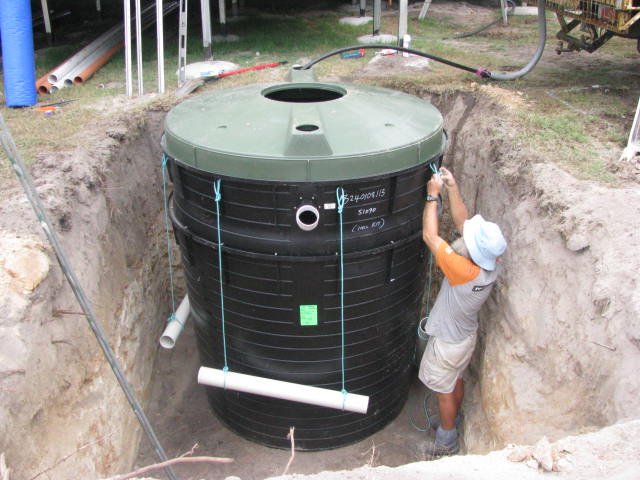For residential areas without a street sewer system for septic waste disposal, local authorities require the construction of a septic tank per household. To construct one’s own, or to see if work being done to build a septic tank is correct, here are steps on how to build a septic tank.
Excavation
Excavate the earth where the vault is planned to be placed. It is often located in the backyard or at the garage—or where it is nearest to the underground street sewer. The usual dimensions for a septic vault are 1.0 (width) x 1.5 or 2 (length) meters with a height of 1.20 meters. Among the main things in how to build a septic tank is having enough volume capacity for a tank to contain and process the waste disposal of a household. For 8 to 12 persons in a house, the dimensions above are adequate.
Foundations and Floor Pavement
Prepare additional excavations of 0.40 meters for width and 0.20 meters for thickness at the sides of the vault. This is for pouring the concrete foundation. Place 10 mm. longitudinal and cross rigged bars to reinforce the concrete foundation. Tie them together with GI tie wires. Also place 10 mm. rig bars on the floor pavement at 0.50 meters on center spacing. Pour concrete on the pavement. Foundation strength is vital when dealing with how to build a septic tank. When improperly constructing a septic vault, water pressure and wear and tear will easily destroy it in a few months.
CHB Walls for Two Chambers
Part the vault into two chambers: the digestive and the leaching chambers. The digestive should have a fourth of the entire vault area and should receive the main inlet pipe. The leaching chamber should occupy ¾ of the vault volume. It receives water from the digestive chamber and releases it gradually to the underground sewer. The hollow block (CHB) walls of both chambers should be reinforced with horizontal and vertical 10 mm. rigged bars. Each hollow block cell should be filled with reinforced concrete. The inner faces of the walls should be applied well with cement plaster. This is how to build a septic tank sturdily that would last a long time.
Provide a hand hole directly above each inlet—one at the head of the digestive chamber, another at the dividing wall, and one on the outlet at the tail end of the leaching chamber. Provide a man hole each chamber.
Concrete Covering
Finally, when constructing a septic vault, provide a reinforced concrete pavement to cover the whole vault with. The hand and man hole covers are integrated with this. Use 10 mm. rigged bars as extra reinforcements.



